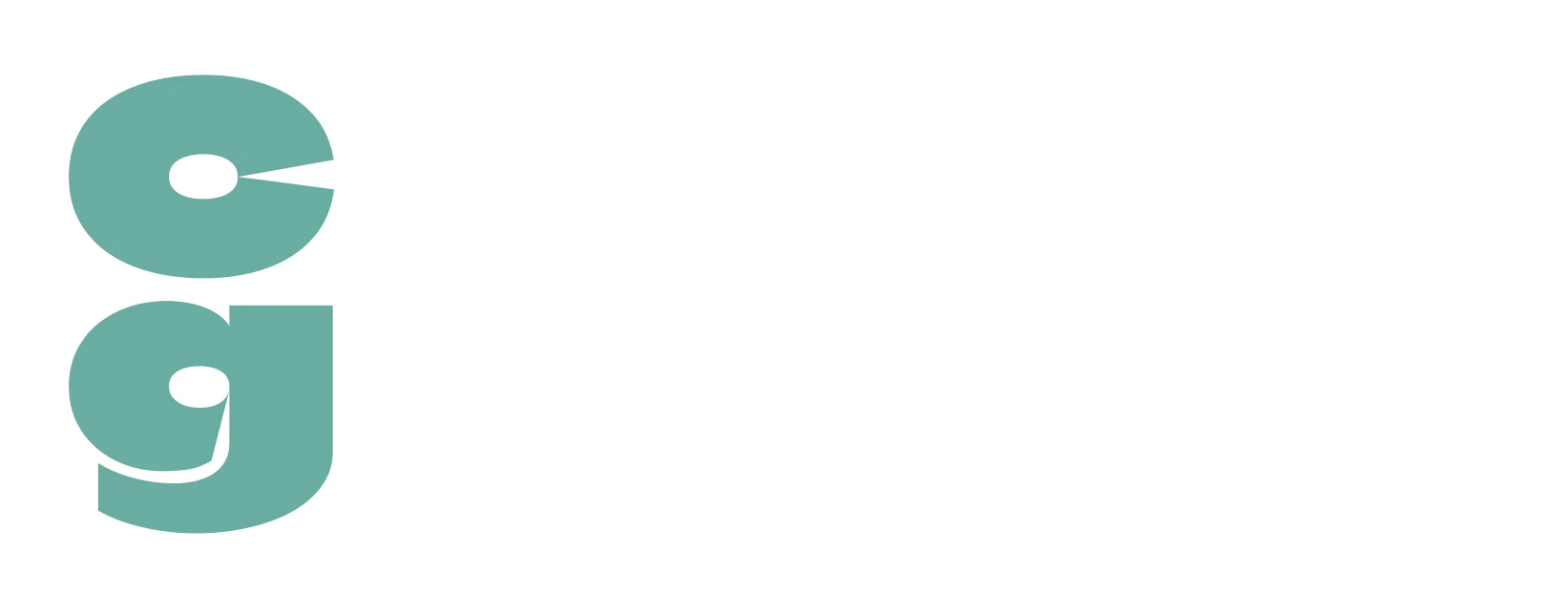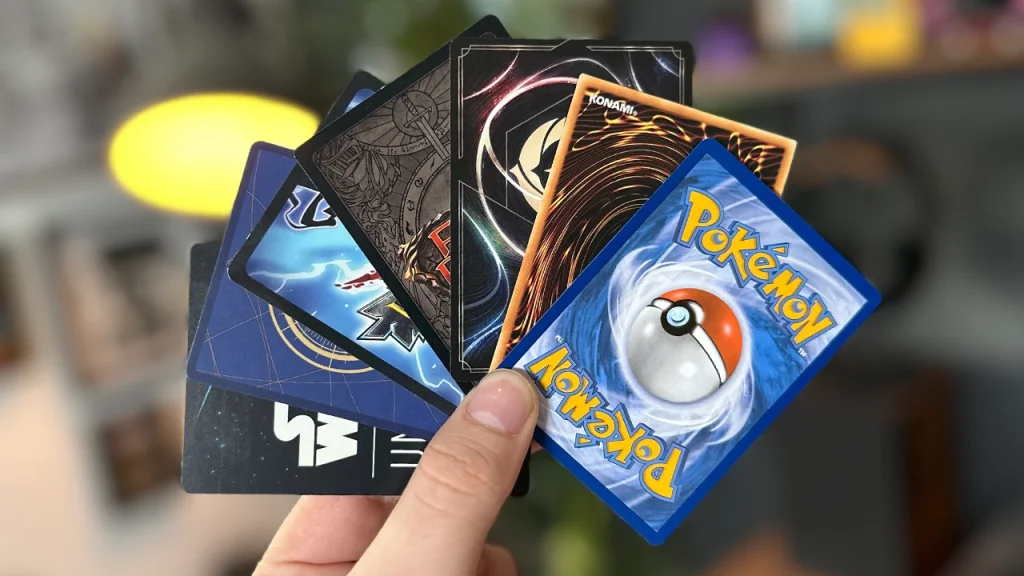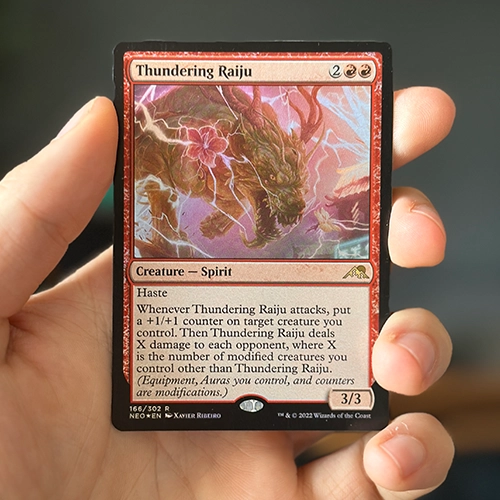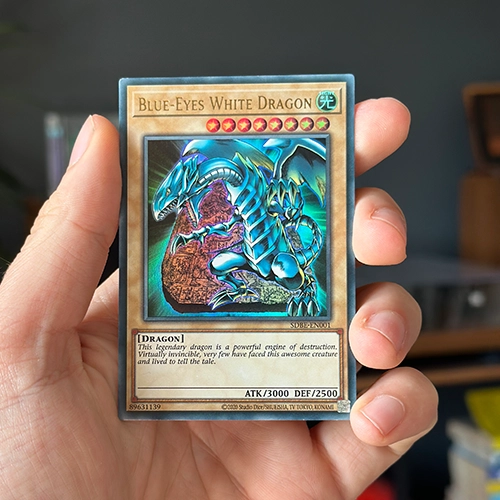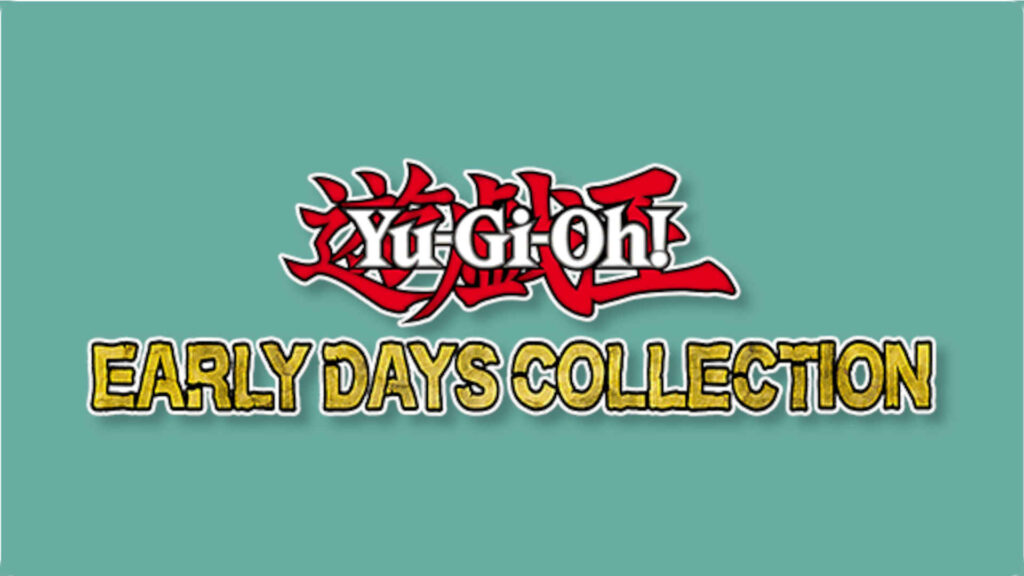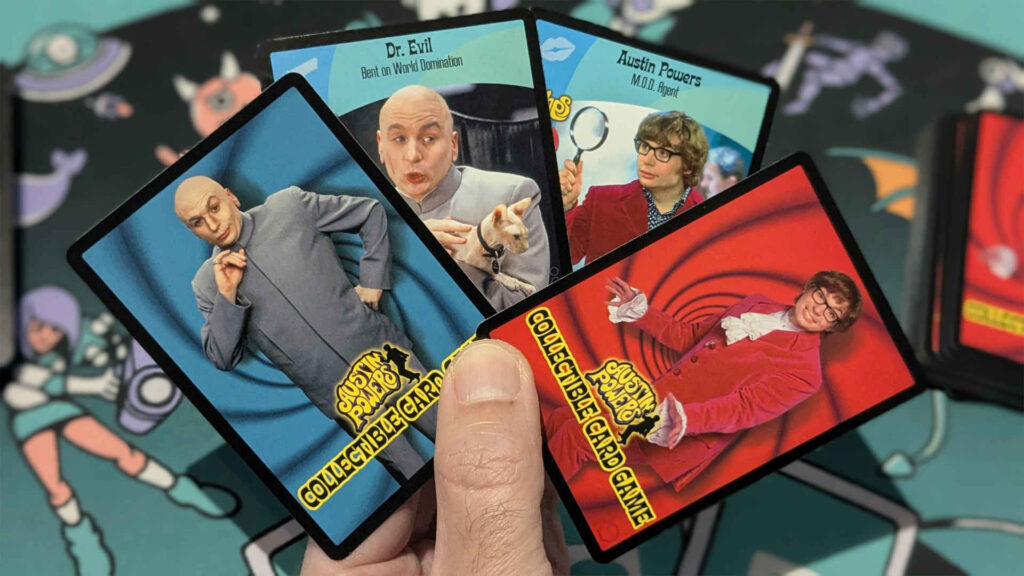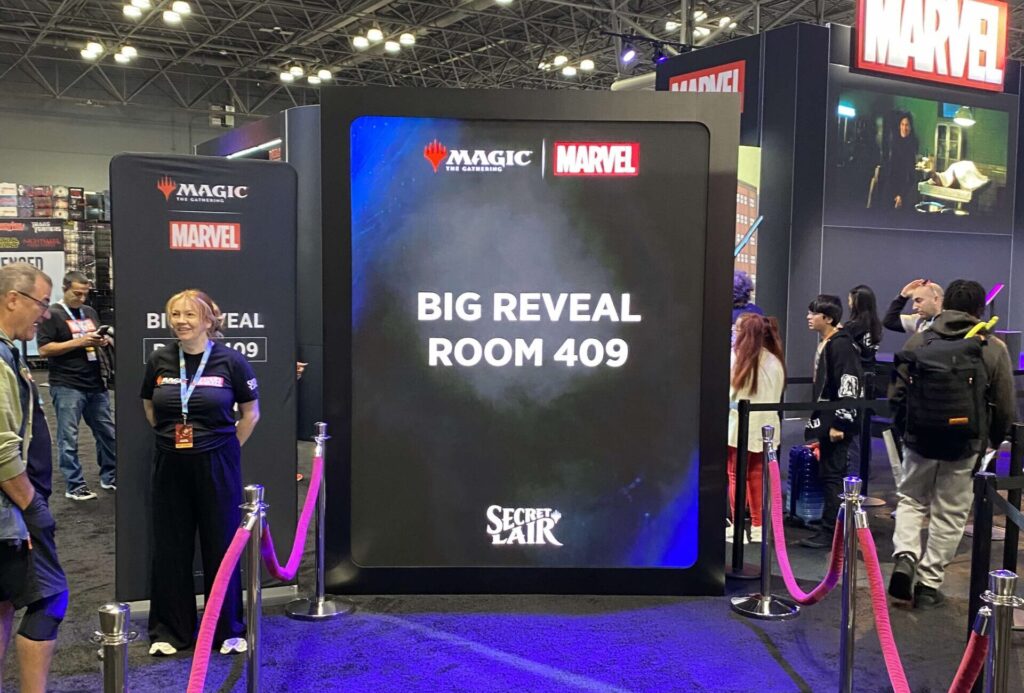Grab your deck and head for the tabletop – as we check out the best trading card games!
It’s been thirty years since the world’s first collectible card game (CCG), Magic: The Gathering, was released.
Though its overnight success spawned legions of new CCGs and TCGs (which are the same thing, just with different names!), most other games launched in the 99s fell by the wayside and were eventually discontinued.
However, Magic: The Gathering is far from the only successful CCG/TCG in the market; there are many other examples of games which have been critically as well as commercially successful.
Let’s find out, as we check out the best trading card games!
Table of Contents
Toggle1. Magic: The Gathering (1993)
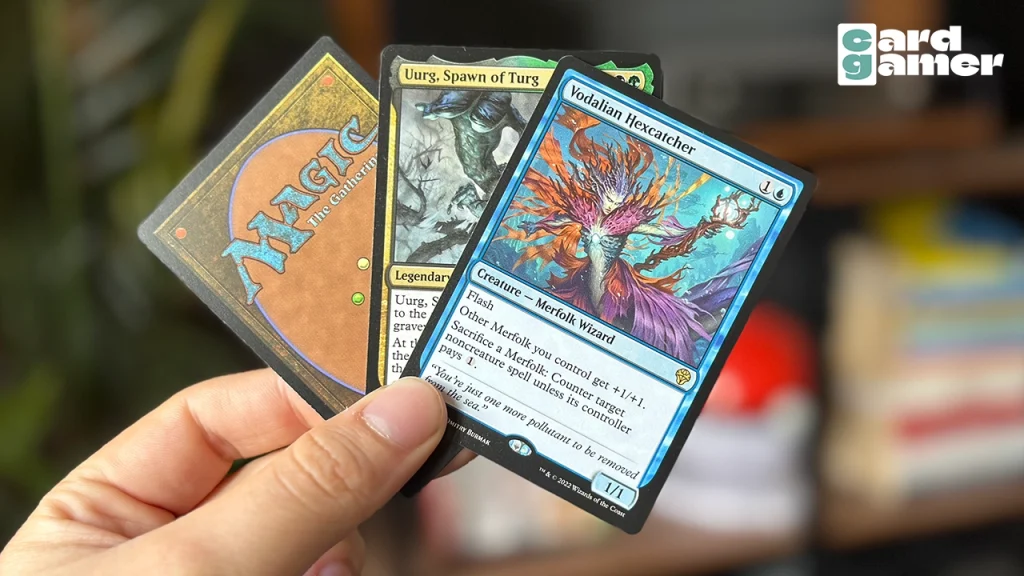
The fact that Magic: The Gathering (MTG) has been around for three decades makes me feel incredibly old.
I remember struggling to get my head around this new concept of building a personalised deck from cards in your collection, with which to take on your opponents.
I thought there was no way it could work and remain playable – it seemed like a concept that was doomed to failure.
Yet here we are, thirty years later, and Magic: The Gathering has arguably never been stronger or closer to the mainstream as it is now.
In case you’ve been living on a different plane of the Multiverse for the last three decades, here’s a quick run down of MTG.
Though many different ways to play have evolved and become popular since the game launched in 1993, a Standard game of MTG sees players in the roles of Planeswalkers – essentially wizards who can travel at will through the different planes of the Multiverse – in a deadly duel to the death.
Their deck of cards is their spellbook, with which creatures are summoned to battle each other and attack the opponent with; the ultimate aim being to reduce your opponent’s life total from twenty to zero points.
Despite first appearances, the basic mechanics of Magic: The Gathering are very easy to understand; it’s a genuinely simple and straightforward game to learn.
The complications come, of course, courtesy of the many thousands of cards available at any given time, with which you’ll construct your 60-card deck.
Deck building itself is a huge part of the appeal of MTG; putting together lethal combinations of creatures or finding killer combos that will destroy your opponents, thanks to the unique effects of various spell cards.
MTG’s healthy and vibrant player base looks set to support the phenomenal game for many years to come; no doubt it’ll still be massively popular in another three decades too!
2. Pokemon Trading Card Game (1996)
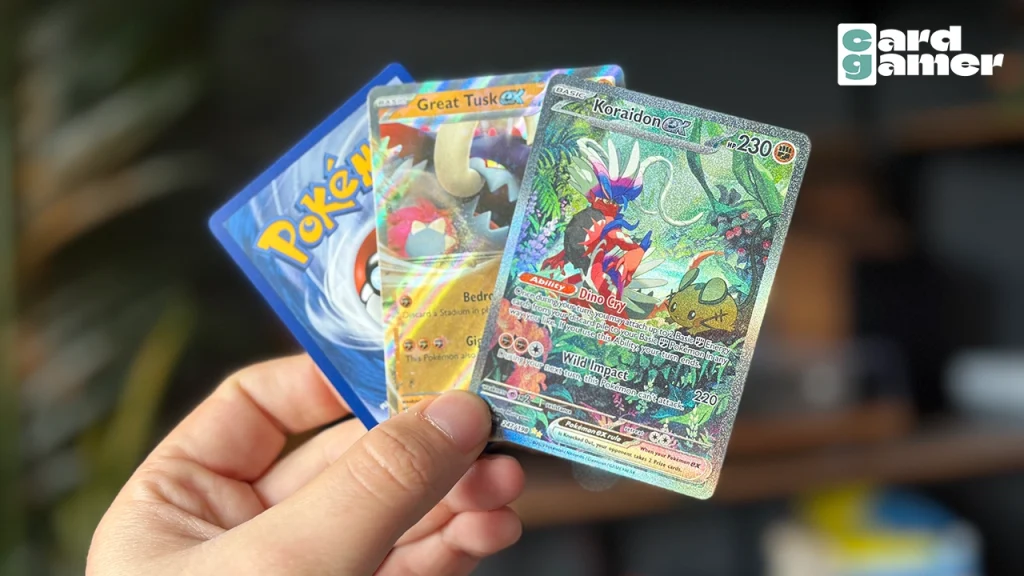
First released in Japan in 1996, the Pokemon Trading Card Game made it to the West in 1998.
Based on the video games which themselves originally released in the same years – 1996 in Japan, then 1998 in the US – the Pokemon Trading Game sees players embodying Pokemon Trainers, aiming to knock out six of their opponent’s Pokemon with their own creatures.
As the video game series has seen the cast of collectible creatures expand from the original 151 to over 1000 Pokemon, so too has the Trading Card Game seen its selection of cards and creatures expand to become a huge selection.
Over the years, many new types of Pokemon have arrived in the Trading Card Game – with ex, GX, V, VSTAR and VMAX versions of numerous Pokemon adding powerful new abilities and high HP making them more powerful than standard Pokemon.
These evolving Pokemon types, as well as the ever expanding roster of characters and other cards – along with the beautiful card art – and the simple to play, hard to master
game mechanics have kept the Pokemon Trading Card Game thriving for decades.
Like MTG, the Pokemon Trading Card Game’s popularity shows no sign of slowing down and continues to attract new, younger players, with its appealingly colourful cards and addictive gameplay.
3. Yu-Gi-Oh Trading Card Game (1999)
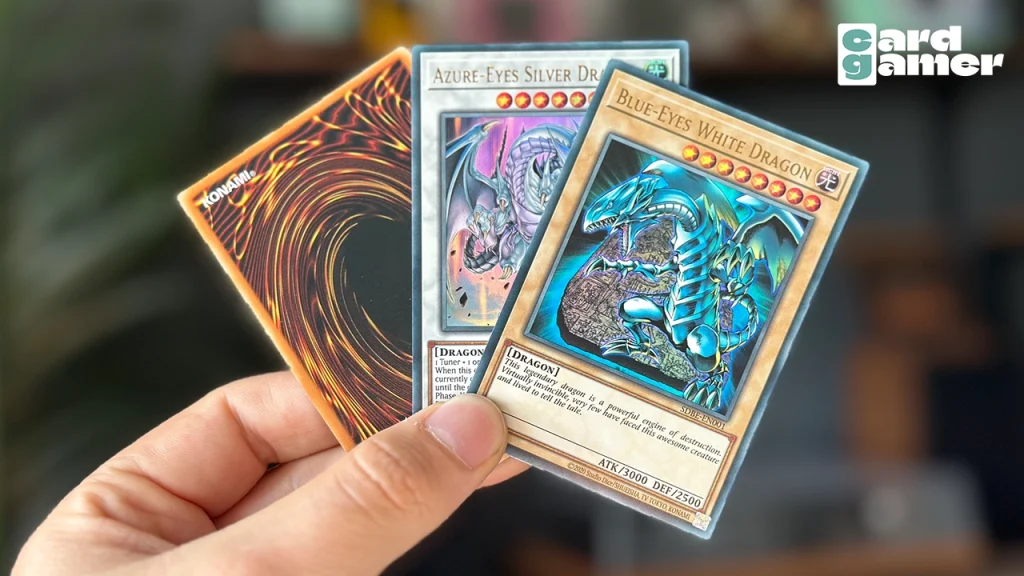
Another game that’s been part of the cultural landscape for decades, Yu-Gi-Oh first launched in Japan in 1999, then headed West in 2002.
There’s a very meta feel to the Yu-Gi-Oh Trading Card Game, with it being based on a game that features heavily in the Yu-Gi-Oh manga (and, subsequently, anime) series.
In the universe of the Yu-Gi-Oh manga and anime, the game is called Duel Monsters; in the real world, it is simply named after the comics and cartoon themselves.
It’s essentially the same game that appears in the stories, however; part of the appeal of Yu-Gi-Oh is seeing powerful cards utilised within the fictional tales, then getting hold of those exact same cards to play with in the real world!
In the Yu-Gi-Oh Trading Card Game, players have decks of monsters, traps and spells which they play onto the field.
Some cards are placed face down and can be triggered either at will or when certain conditions are met in the game; this adds a great deal of tension during play, as you won’t know what your opponent has seeded the Spell/Trap zone of the field with until it’s revealed.
Yu-Gi-Oh is another game that’s hugely popular and seems to be perennially so; like Magic: The Gathering and Pokemon, it’s just as healthy – if not more so – today than ever, thanks to the ability to play online as well as collect and play with physical cards against family and friends.
Something that’s unique to Yu-Gi-Oh amongst its peers is the fact that cards are never rotated out or made illegal to use in tournaments as new sets are released – which means that cards you picked up in the early 00s are still playable in your tournament deck even now, up to 20 years later!
4. Disney Lorcana (2023)

When Disney TCG, Lorcana was announced, its upcoming release immediately captured not just the attention of tabletop card game fans worldwide, but also Disney fans in general, who’d never even considered playing a Trading Card Game before.
It’s not hard to see why; the cards, drawing inspiration from 100 years of Disney stories, characters and settings, are absolutely gorgeous and immediately catch your attention.
The mechanics of the game are also straightforward and, particularly in comparison to titles such as Magic: The Gathering and Yu-Gi-Oh, the experience feels an awful lot more welcoming to newcomers.
So, what’s the general game of Lorcana actually like to play?
In Lorcana, players are cast as ‘Illumineers’, who can create famous Disney characters using Ink, with the ultimate aim to gather 20 Lore points to win.
Ink is the resource used to pay to bring cards into play; almost any card can be used as Ink, which solves the problem of not having enough Energy, as in Pokemon, or Mana, as in Magic: The Gathering.
Earning Lore is achieved by sending Characters on Quests – which Exerts them; this works like ‘tapping’ (or rotating cards 90 degrees) in MTG.
Lore is represented by Diamond symbols at the bottom of a card – and the number of symbols is how much Lore a character can earn from a Quest.
Characters can challenge each other, though in a neat twist, you can only Challenge characters who are Exerted; this adds a clever risk/reward aspect as you’ll need to Exert in order to gather Lore, but this also leaves your Character vulnerable to being Challenged, which in turn can remove them from play entirely once they’ve taken enough damage.
Though the first set of Disney Lorcana was beset by stock problems, due to the unprecedented demand for the cards among players, fans and collectors, publisher Ravensburger reprinted the set and seem to have avoided the same issue occurring with subsequent sets.
The game has really come into its own with the addition of Location cards in third set Into the Inklands, and even solo and co-op options with the Ursula’s Return set!
It’s very likely that you’ll see Lorcana moving further up this list in the years to come!
5. Star Wars Unlimited (2024)
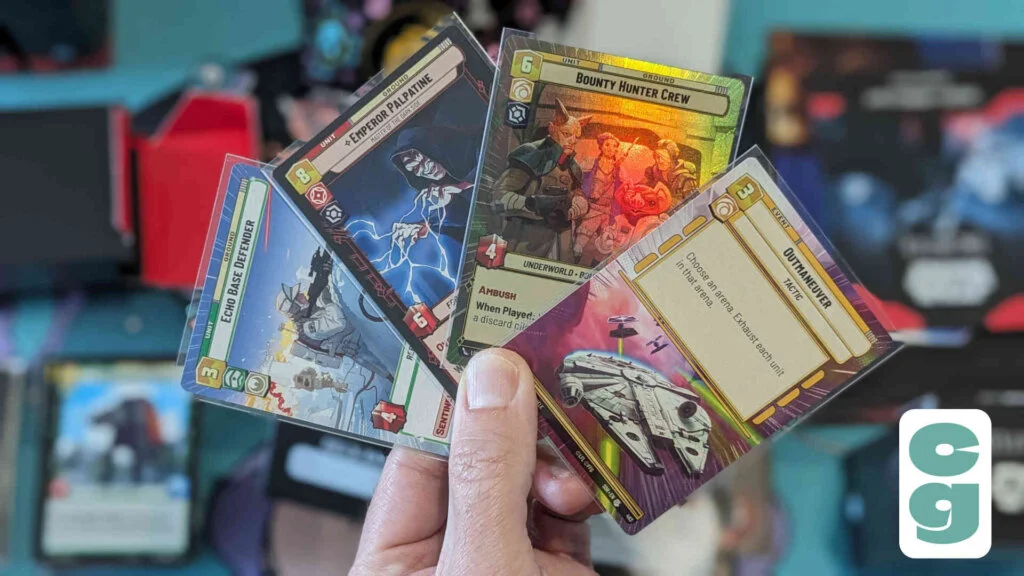
For decades, three big trading card games/collectable card games absolutely dominated the tabletop and the attention of fans everywhere.
Even though countless TCGs have been available over the years, very few have ever challenged the domination of the big three (Magic: The Gathering, Pokemon and Yu-Gi-Oh) in a serious way, but in 2023 Disney Lorcana truly shook up the scene and drew the attention of new legions of players and collectors.
Despite the exciting shake-up of the TCG scene, Star Wars Unlimited, another new kid on the block, has made a noticeable impact with its first set, Spark of Rebellion.
Developer and publisher Fantasy Flight/Asmodee are no strangers to the Star Wars license, nor is the tabletop or even the TCG/CCG scene new to the franchise, as you can see in our History of Star Wars CCGs.
Despite this, and even though Star Wars remains as popular as ever outside the confines of the tabletop, very few Star Wars card games have enjoyed much in the way of longevity.
Star Wars Unlimited doesn’t seem to have put a foot wrong yet, however, with straightforward gameplay, appealing card art and a very simplified product range that allows fans, regardless of their level of experience with TCGs, to easily pick up and play this latest adaptation of the popular saga.
Though rare and highly sought after variants of cards exist, this aspect of the game isn’t at the forefront of the design; it definitely feels as if this is a game built for players, rather than collectors.
The game itself sees players attempting to reduce their opponent’s Base to zero health. The Base and Leader cards a player has determines the colours of Aspects they can use in their decks (see our Aspects in Star Wars Unlimited guide), and character combat takes place in two areas: Ground and Space, cleverly mirroring the multi-environment battles in the Star Wars movies.
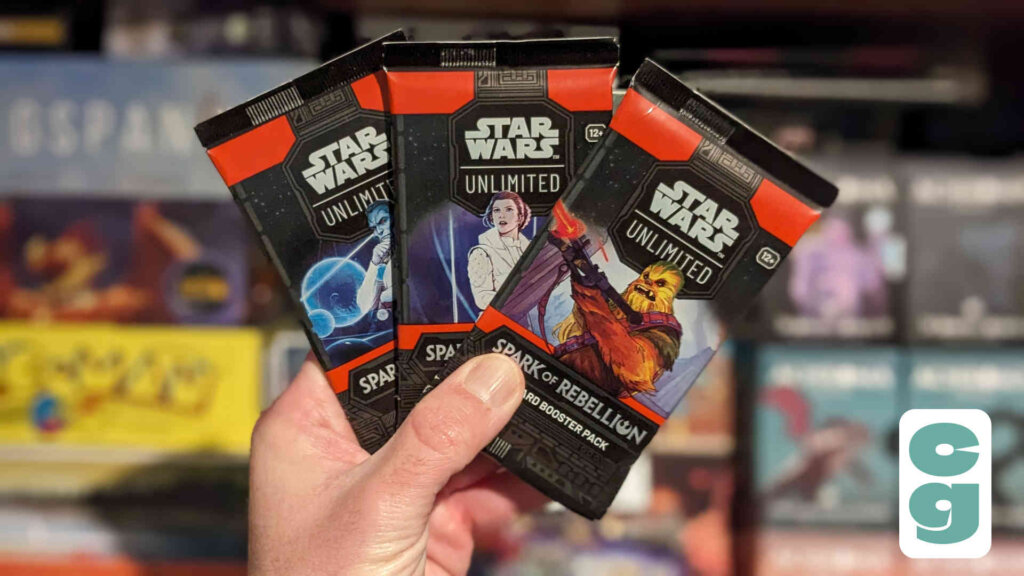
Booster packs feel generous, with 16 cards in each one and both a Leader and Base per pack too; this allows players to also play in a variety of different formats in a very accessible way, which we’ve covered in our How to Play Draft and Sealed Games in Star Wars Unlimited guide.
The strength of the game is apparent despite how new it is, and Star Wars Unlimited has already proven to be a big success with players.
Though it didn’t see the drastic drought of cards that plagued the early days of Disney Lorcana, demand has been high for Star Wars Unlimited, which looks like it’s going to be a fixture on the tabletop for years to come.
6. Flesh and Blood Trading Card Game (2019)
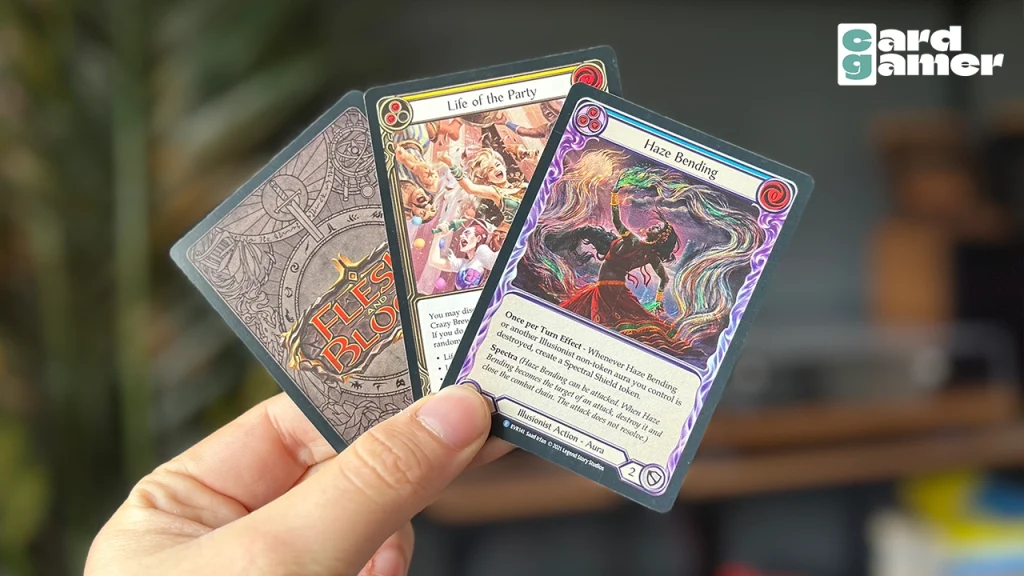
Despite only arriving on the trading card game scene in 2019, Flesh and Blood has built up an impressive and dedicated player base – thanks to its easy to learn gameplay and innovative mechanics.
Hailing from New Zealand-based Legend Story Studios, Flesh and Blood sees players choose a single hero to play with, equipping them with items and weapons that are used to attack the other player’s hero – who of course has their own associated cards to attack and defend with.
Heroes are based on classic fantasy archetypes for the most part, with Flesh and Blood’s world and lore allowing for beautifully illustrated and – pun not intended – nicely fleshed out designs.
An interesting aspect of Flesh and Blood is the recycling of cards to use as resources when bringing other cards into play; any card can be used as a resource – and these are ‘pitched’, then placed on the bottom of your draw deck.
Naturally, this means that these cards will be coming back to help or hinder you as the game progresses – giving weight to every decision of which cards to ‘pitch’.
Combat has a fast paced design that relies on a ‘chain’ system, which almost has the feel of a one on one fighting game.
Though a relative newcomer to the TCG scene, it’s clear that Flesh and Blood is a thoughtfully, smartly designed game by TCG enthusiasts – and it looks set to be around for a long time to come.
7. Keyforge (2018)

The designer of Magic: The Gathering – Richard Garfield, has been responsible for numerous other tabletop game designs since his seminal CCG was released in 1993.
Many have been well received both commercially and critically – and Keyforge is no exception.
Keyforge has an incredible, technology-driven aspect up its sleeve: each deck you purchase is randomly generated by an algorithm.
What that means in practical terms is that your deck of cards is entirely unique in its construction and even its name (which is also randomly generated!).
Though this also means that decks cannot be built in the same way as is the norm with other TCGs, it means that – despite an expanding pool of cards, drawn from numerous, unusual factions – you can never be certain what will lurk in a Keyforge pack.
The mechanics of Keyforge are very different to the usual ‘drain your enemy’s life force to zero’ too. The game sees players attempting to forge three keys (hence the game’s name!), by collecting a resource called ‘Aember’.
In lieu of using other cards or resources to pay to bring your hand into play, players instead declare one of three ‘Houses’ that they’ll be using at the start of each turn – and can play as many cards from their hand that match the declared House on their turn.
The visual design of Keyforge is absolutely gorgeous, with an assortment of crazy creatures, items and settings that span both sci-fi and fantasy, set in a strikingly bright multiversal milieu.
Despite its original publisher selling the rights on – with the game moving from Fantasy Flight Games to Ghost Galaxy in the process – Keyforge still has a committed playerbase.
Keyforge’s unique, randomly pre-constructed decks also prevent the use of online deck lists being used to one-up opponents – which is a refreshing change for a modern TCG!
8. Digimon Trading Card Game (2020)
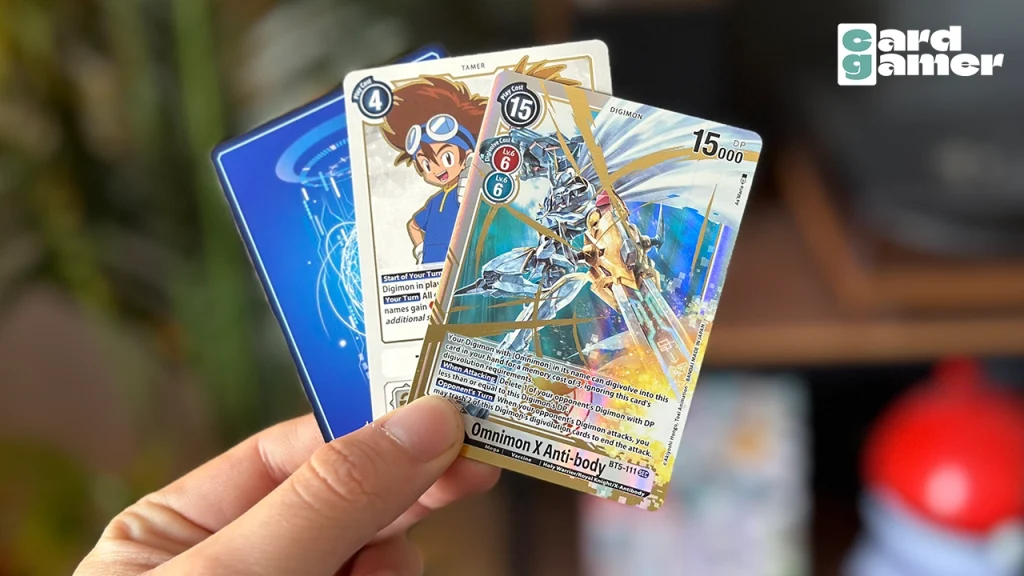
Digimon itself has been around in one form or another – beginning as Tamagotchi-esque virtual pet devices, before becoming an animated show, manga and video game series – since 1997.
It spawned a Collectible Card Game in 1997 too, though the game available today is a new design – with numerous versions of Digimon card games having been released since the late 90s.
There are some similarities between the Pokemon and Digimon card games – in particular the aspect of bringing creatures into play and evolving them into more powerful forms – but the aim of Digimon is different to the ‘knock out a certain number of opposing creatures’ of Pokemon.
Instead, in Digimon, players attempt to destroy their opponent’s Security cards – by attacking them with their Digimon creatures.
One aspect of the game that’s really interesting is the Raising Area, which players use to hatch and breed new Digimon.
The gameplay in the Digimon Trading Card Game – with only three types of cards: Digimon, Tamer and Option cards – is incredibly simple and fast-paced, giving the game an accessible feel.
Many other TCGs can feel overwhelming at first, but Digimon is a game that can be picked up and played very quickly by gamers of all ages!
9. One Piece Card Game (2022)
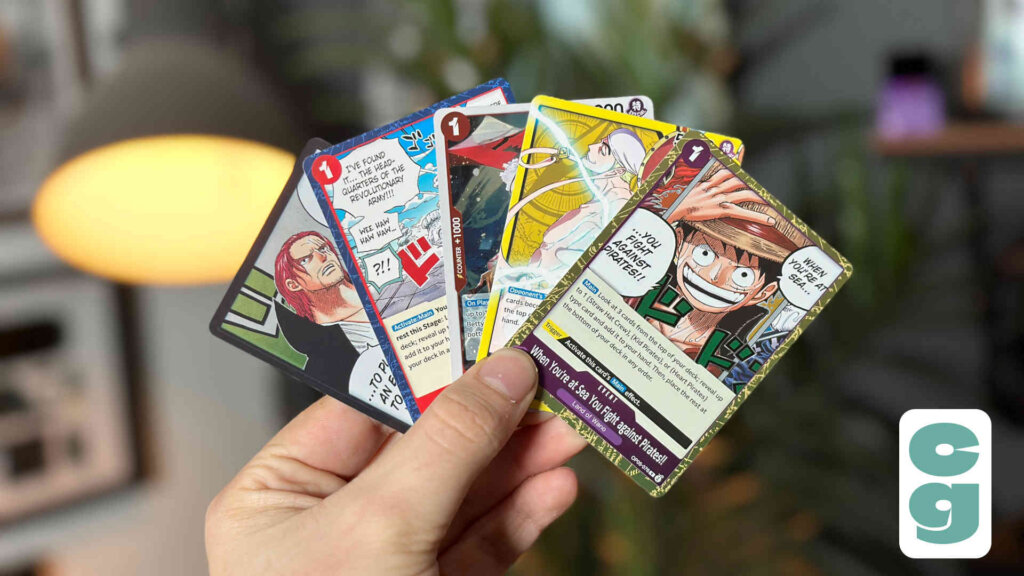
One Piece has existed as a manga all the way back to the 90s, and it’s seen a few adaptations into tabletop form in the decades since.
However, none have truly captured the imagination and attention of players until Bandai launched the One Piece Card Game in 2022.
Though it’s still relatively new, the One Piece Card Game has proven to be very popular and even highly collectable, with absolutely beautiful cards and a stunning array of incredibly rare variants to find.
The game itself is incredibly straightforward and, like the previously covered Flesh and Blood, Lorcana and Star Wars Unlimited, has its own way of ensuring that players can steadily bring more and more powerful cards into play as the game progresses, without being subject to the problem of not having enough resources to do so.
In the case of One Piece, that comes in the form of DON!! cards, which have their own separate deck and are drawn each turn, by both players.

Though the function of DON!! cards always remains the same, even these can be found in rare, highly sought after and sometimes valuable variants!
You can check out more details in our One Piece Card Game card types guide.
One Piece’s story, characters and settings lend themselves well to the mechanics of a TCG; its Leader cards, support Characters and Events all help to recreate the saga’s unique feel of adventure, combat and piracy.
Its focus on providing spectacular art and amazing card variants (take a look at the alternate art cards in OP-05, for example) also provide an addictive thrill when opening boosters, as well as bolstering the value of cards if you’re a collector.
With numerous sets having already been released and many more planned, the popularity of the One Piece Card Game shows no signs of slowing down, with numerous stock problems and overpriced product being reported even now.
10. UniVersus (2006)
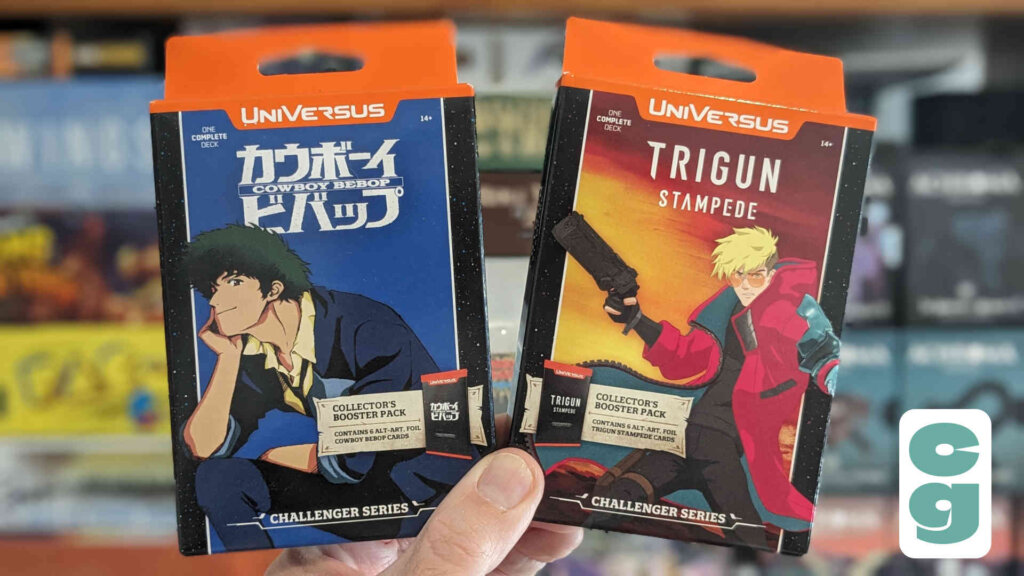
Originally released as the Universal Fighting System (or UFS) way back in 2006, the game was rebranded as UniVersus in 2021.
UFS as a system allows players to take cards from many different franchises (usually, but not always, drawn from the universes of video games and anime) and battle each other, with a refreshing level of compatibility that allows an incredible amount of customisation.
Though the card fronts and backs have undergone numerous redesigns over the years (see our UniVersus card back design guide for more insight), it’s important to know that even the oldest cards, from franchises such as Capcom’s Street Fighter and popular webcomic Penny Arcade, are still compatible with more recent sets, such as Cowboy Bebop or Trigun Stampede (pictured above).
UniVersus has most recently focused on popular manga/anime series My Hero Academia, but it’s extending way beyond that, with sets such as Godzilla, Attack on Titan, Tekken and Star Trek on the way.
The game itself, befitting its origins as the Universal Fighting System, feels like the back and forth, combo-led battle between characters in a digital fighting game; there’s a reason it’s endured for so long, even if it is still a game system that feels like it often flies under the radar.
So that concludes our best Trading Card Games list – there’s plenty more games out there, but these are the ones we consider the very best.
This article may contain affiliate links. If you use these links to purchase an item we may earn a commission. Thank you for your support.
